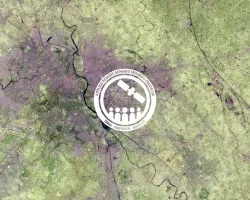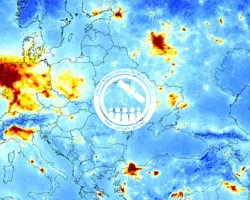Description
Measurements of forest cover and change are vital to understanding the global carbon cycle and the contribution of forests to carbon sequestration. Many nations are engaged in international agreements such as the Reducing Emissions from Deforestation and Degradation (REDD+) initiative, which includes tracking annual deforestation rates and developing early warning systems of forest loss. Remote sensing data are integral to data collection for these metrics, however, the use of optical remote sensing for monitoring forest health can be challenging in tropical, cloud-prone regions.
Radar remote sensing overcomes these challenges because of its ability to “see” the surface through clouds and regardless of day or night conditions. In addition, the radar signal can penetrate through the vegetation canopy and provide information relevant to structure and density.
Although the capabilities and benefits of SAR data for forest mapping and monitoring are known, it is underutilized operationally due to data complexities and limited user-friendly tutorials.
This advanced webinar series will introduce participants to 1.) SAR time series analysis of forest change using Google Earth Engine (GEE), 2.) land cover classification with radar and optical data with GEE, 3.) mapping mangroves with SAR, and 4.) forest stand height estimation with SAR. Each training session will include a theoretical portion describing the use of SAR for landcover mapping, as related to the focus of the session, followed by a demonstration that will show participants how to access, download, and analyze SAR data for forest mapping and monitoring. These demonstrations will use freely-available, open-source data and software.
Attendees who have not completed the following may not be prepared for the pace of this training:
By the end of this training, attendees will be able to:
- Interpret radar data for forest mapping
- Understand how radar data can be applied to land cover mapping
- Become familiar with open source tools used to analyze radar data
- Conduct a land cover classification with radar and optical data
- Map mangrove forests with radar data
- Understand how forest stand height can be mapped using radar data
- Apply SAR time-series analysis to map forest change
- Learn about upcoming radar missions at NASA
Local, regional, state, federal, and non-governmental forest and environmental managers already working with satellite remote sensing datasets for forest monitoring.
- Four parts with sessions offered in English and Spanish (Link to Spanish Series)
- Four exercises
- One Google Form homework
- Introduction to analysis and interpretation of SAR data for forest mapping
- Exercise: Time Series of Forest Change using GEE
- Q&A
Materials:
- Review of the unique attributes of radar and optical data as related to forest mapping and how they can be complementary
- Classification algorithms and improvements with optical imagery
- Exercise: Land Cover Classification with Radar and Optical using GEE
- Q&A
Materials:
- Introduction to analysis and interpretation of SAR data for mangrove mapping
- Exercise: Mapping Mangroves with the Sentinel Toolbox
- Q&A
Materials:
- Introduction to the use of SAR data for mapping forest stand height
- Applications and looking forward to NISAR 2022
- Exercise: Estimating Forest Stand Height
- Q&A
Materials:



